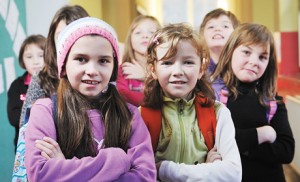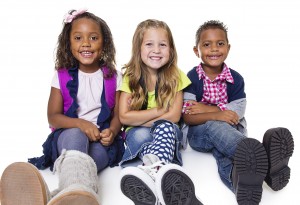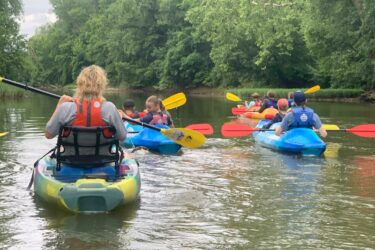When Shawna Crist’s daughter, Carly, entered third grade last September, the 8-year-old fully expected to continue hanging out with a girl she considered a close friend. “But pretty soon, I wasn’t hearing this little girl’s name anymore,” recalls Crist. When pressed, Carly offered, “Mom, she’s just not the same. All she talks about is softball.” And while Carly enjoys the sport, it simply doesn’t hold the same degree of interest for her. Enter new friends.
It’s tricky keeping up with your child’s shifting social scene in the elementary school years. The upper grades in particular can be a breakaway time for a lot of kids. Polarization around different activities becomes evident, cliques form and long relied upon friends start to move in different circles. It’s all normal and a part of life for kids, but that doesn’t make it any easier.
In the early school years, it’s very typical for kids to develop friendships based on proximity. “But as kids grow up, it’s less about being in the same classroom or even on the same team and more about mutual interests and how those interests relate to who they are as individual people,” says Cathi Cohen, a licensed clinical social worker, certified group psychotherapist and author of Raise Your Child’s Social IQ: Stepping Stones to People Skills for Kids (Advantage Books; 2000).
“There are two noticeable social transitions,” says Jonathan League, owner of Adult Child Family Counseling of Mason. “The early school years ages, which are ages 6 to 10, and then again during the middle school years, which are ages 11 to 14,” he says. During these periods, the structure and understanding of life radically changes for kids. They start to figure out what they like and where their abilities lie. Some kids will naturally drift apart from friends because now they’re spending more time in various organized activities. A child’s best friend may start playing competitive sports and develop new friendships within the team. There are also significant brain changes occurring at this time which translate into new cognitive abilities and cause a child to view themselves in new ways in relation to their social groups. Children start to notice differences in abilities and perspectives and compare themselves to their friends. “As children get older, even when they spend time together, they may not feel a strong connection with each other,” League says.
Waning Friendships
“Losing a friend is a big deal to a child and with any big loss in life there are predictable emotions that must be processed,” says League. Allow your child to share her emotions while remaining neutral. You could say, for example, “I’m sorry that your friend is not calling you back. Will you talk to me about how you are feeling?” Spend some time acknowledging your child’s hurt and provide a safe place for them to talk to help her move from hurt to acceptance. Let your child know that no matter what they experience, they are loved and cared for, League advises.
Eager parents may take it upon themselves to try and find a new friend for their child or even push them to try harder to stay connected to current ones, but it probably won’t work.
“Pushing usually doesn’t work,” says League. “It doesn’t address what’s really going on, and puts stress on the parent-child relationship,” he adds. By the same token though, you shouldn’t ignore what’s going on with your child.
“We encourage parents to work with their kids to understand how friendships work and then create opportunities for a child to find new friends or enrich their current relationships,” League says.
In other words, keeping the atmosphere light and friendly, sit down and talk with your child about how to be a good friend and develop a plan for meeting new friends. This may include how people like to be treated in a friendship and opening up your home for a sleep over or signing them up for an organized activity.
League adds gentle encouragement for parents. “Something we tell parents is that they can’t grow up for their child; they have to do that for themselves. Your job is to love them and guide them as they figure it out.”
“EG NOG”: A Helpful Parent Tool
As they forge new interests and friendships, kids are bound to experience rough patches. They may be left out of activities (this is particularly hard to swallow) and welcoming smiles may be replaced by steely glances overnight. Whether they say it or not, kids need their parents’ steady guidance during this time.
Cohen suggests an exercise she’s labeled EG NOG for parents to use the next time their child comes home upset. The acronym breaks down as follows. E: is for Empathize. G: is for Get neutral and listen as they spill out their story. At some point they’ll peak out and that’s when you can begin to … N: Narrow their focus. Ask which part of this upsets them the most? Which part can you help them fix? After you help them narrow it down into a more realistic thinking pattern then you can … O: Operationalize. Meaning put into action a plan for dealing with that one piece she can do something about. And then the last G: Get moving. Have your child get moving on the plan, hopefully develop a backup plan and then have them report back after they try out it out. If it didn’t work, how can it be tweaked to make sure it does?
“The EG NOG process is a way of empowering kids. It’s a way of keeping you neutral as a parent while helping them cognitively limit their distortions. It keeps them focused on the part of the situation they do have control over and that they can change,” says Cohen. Add it to your arsenal of coping strategies and together you and your child can ride out any storm!






